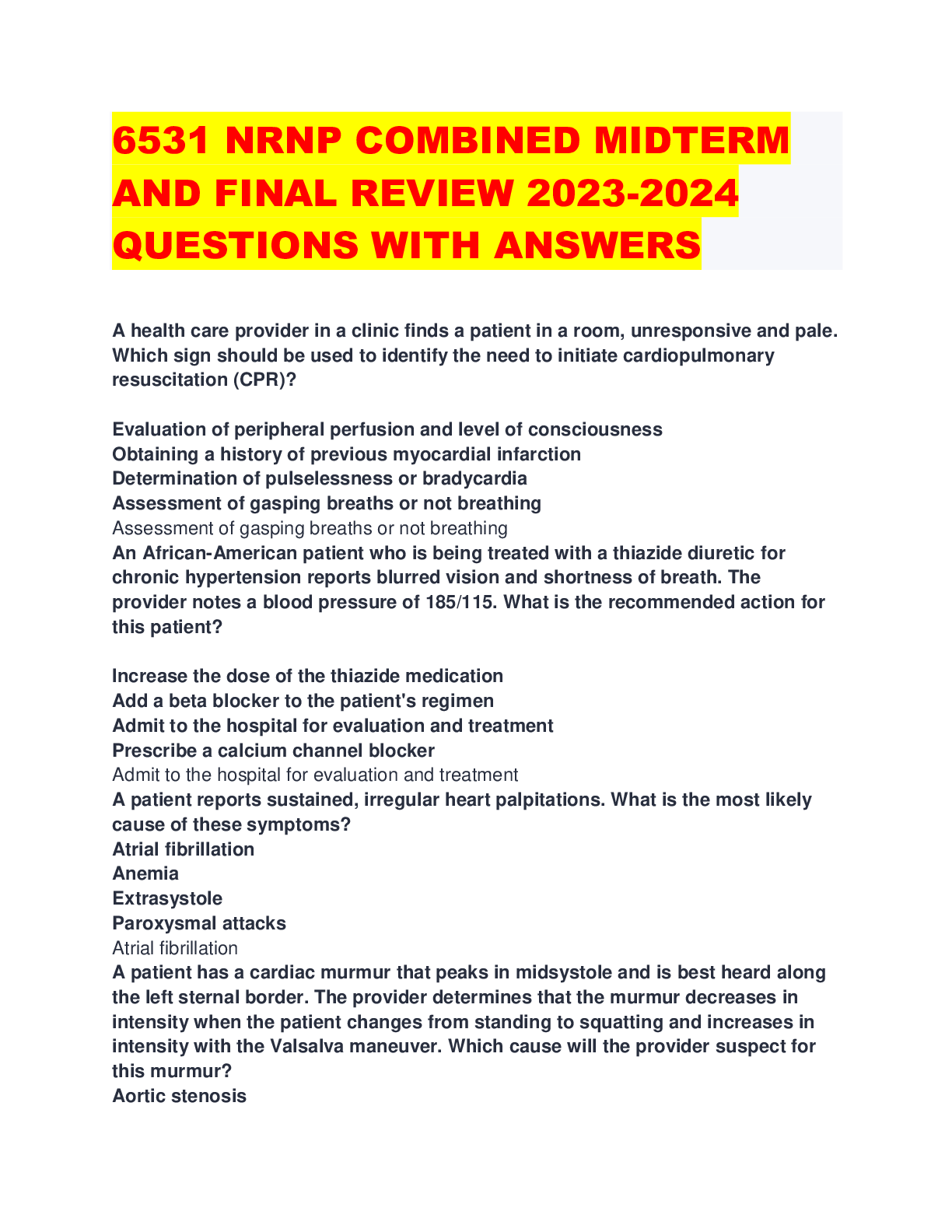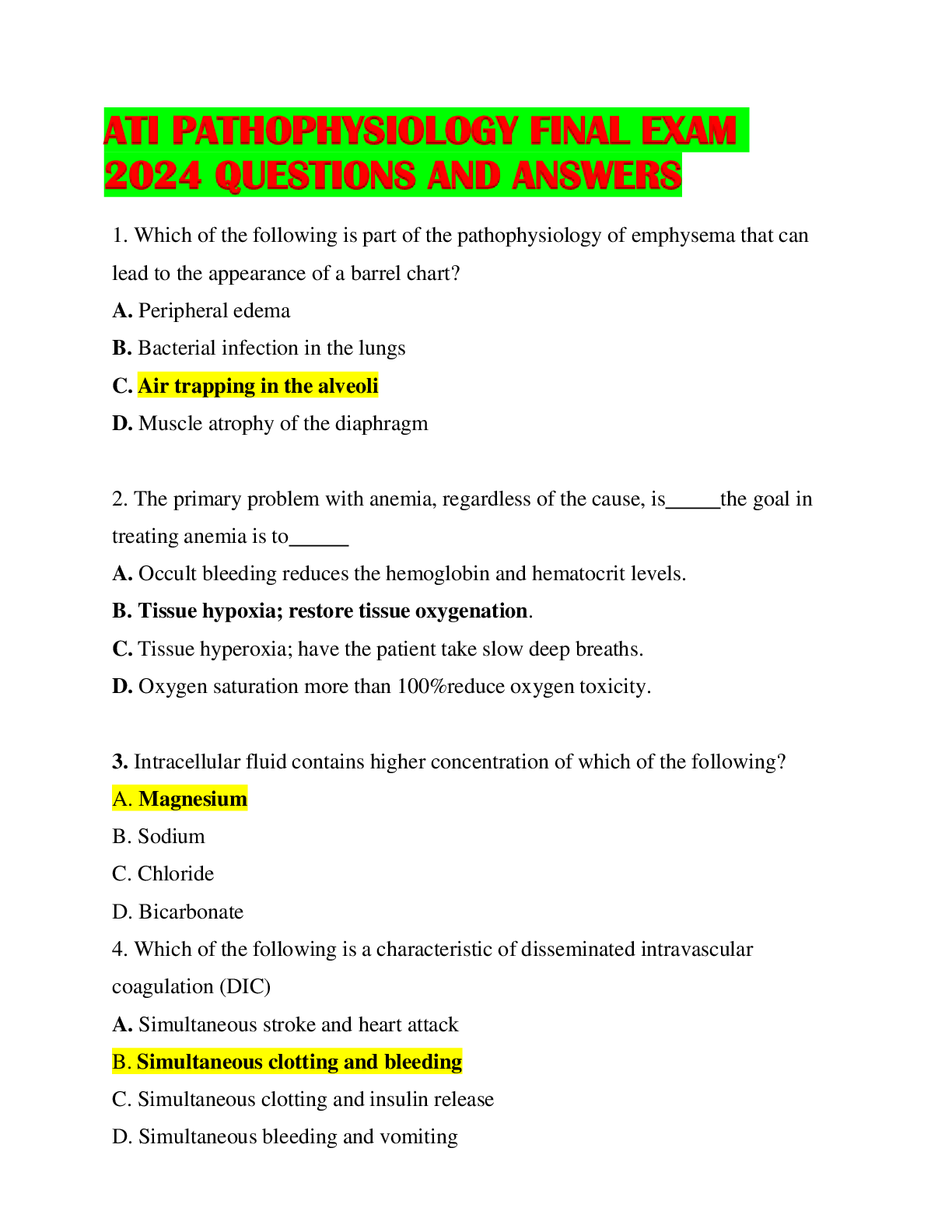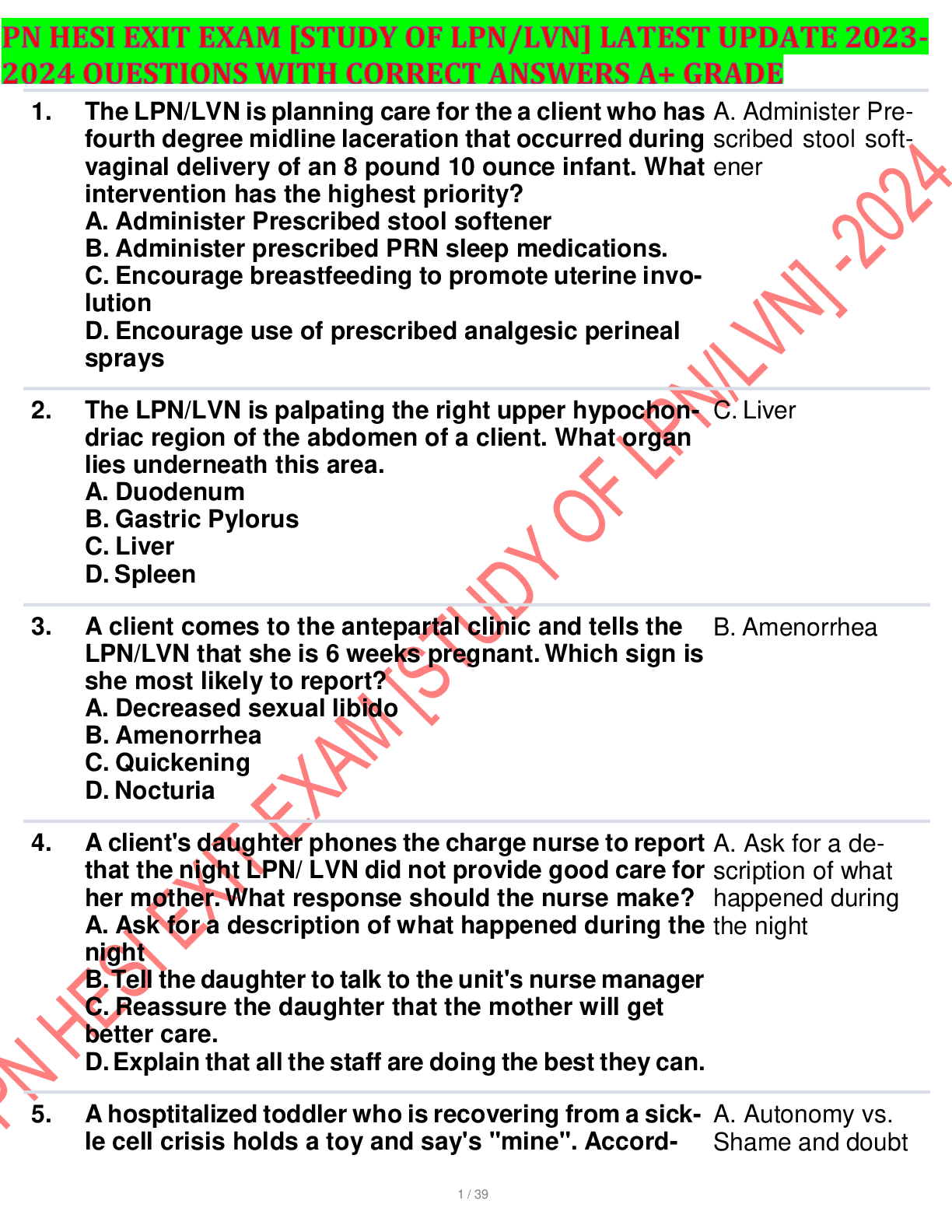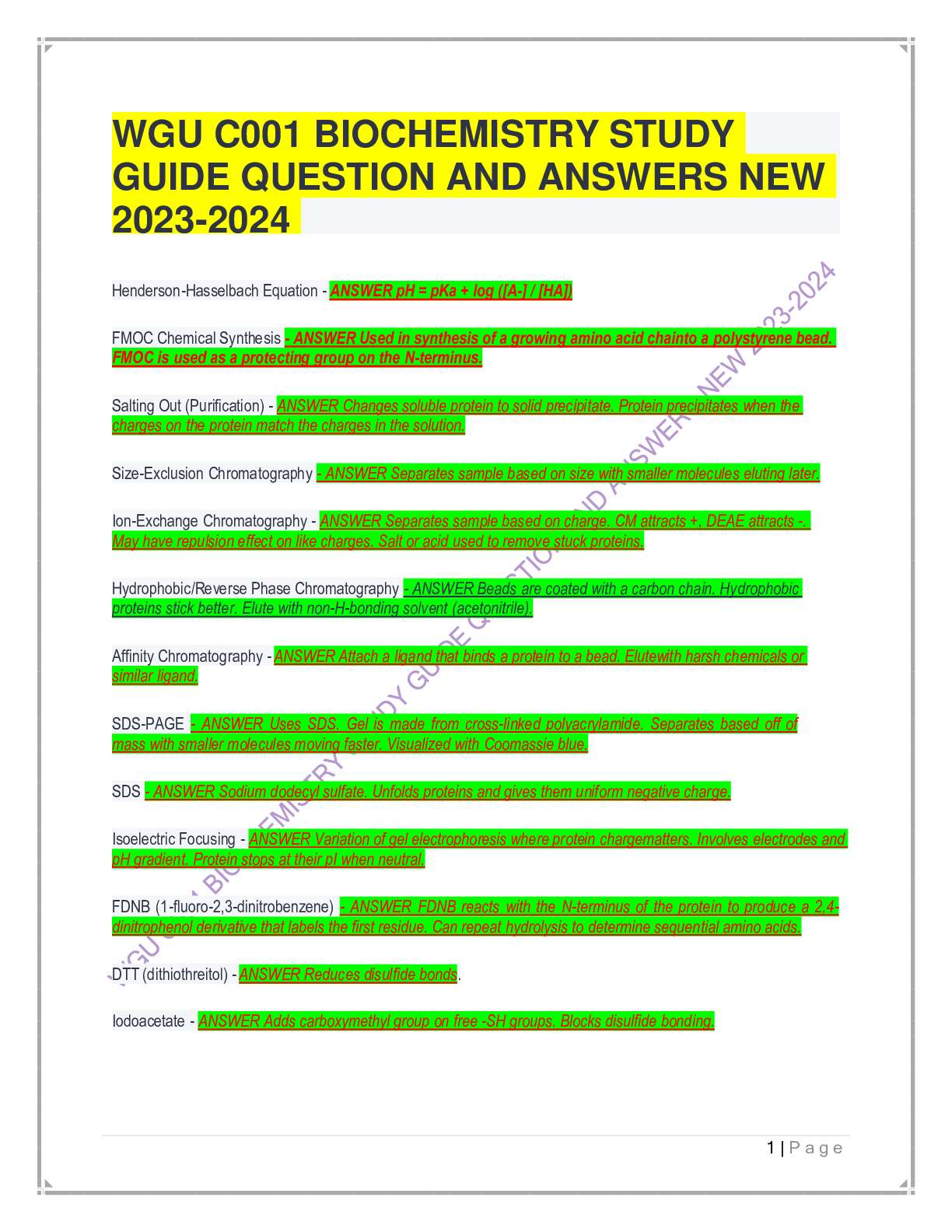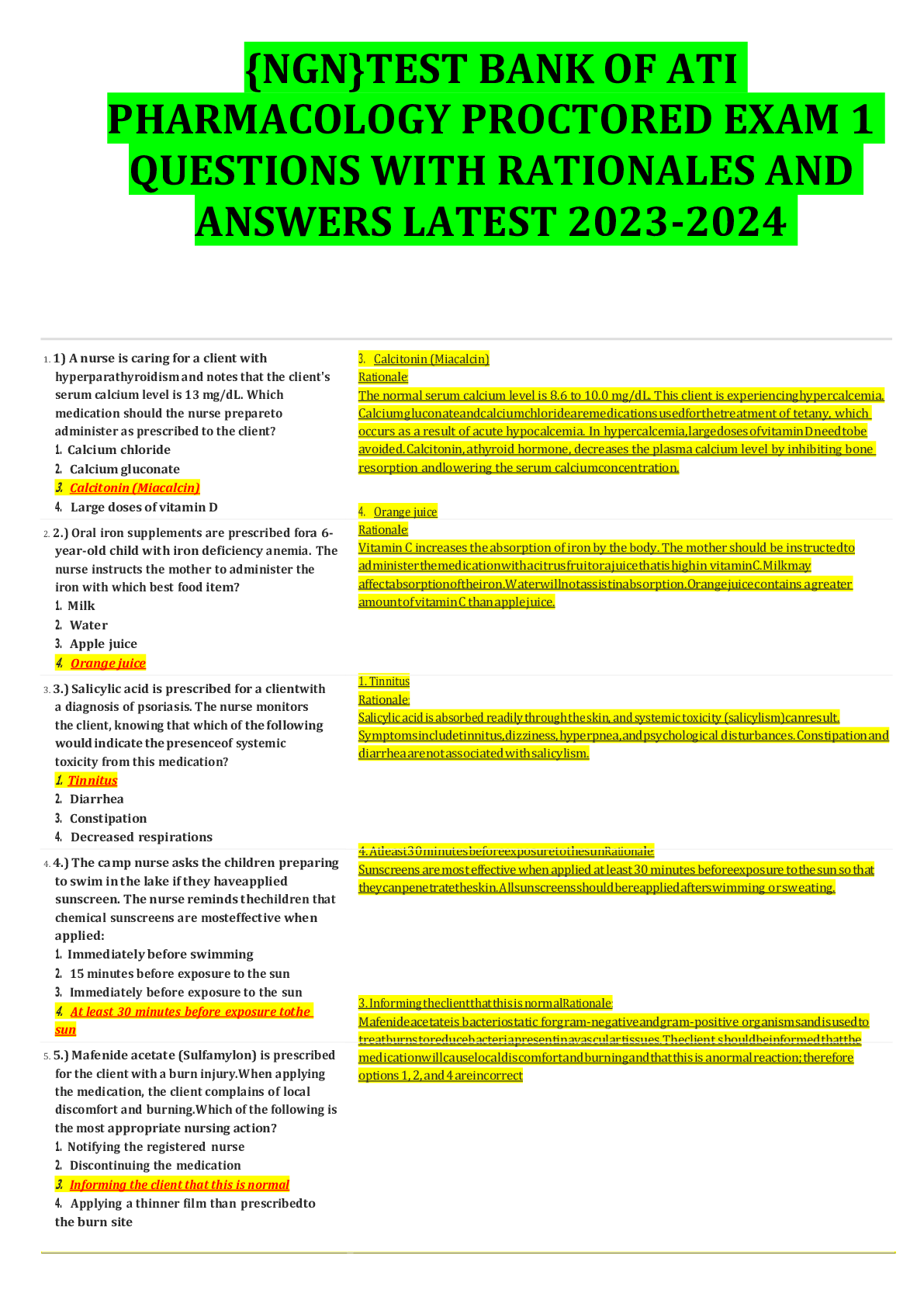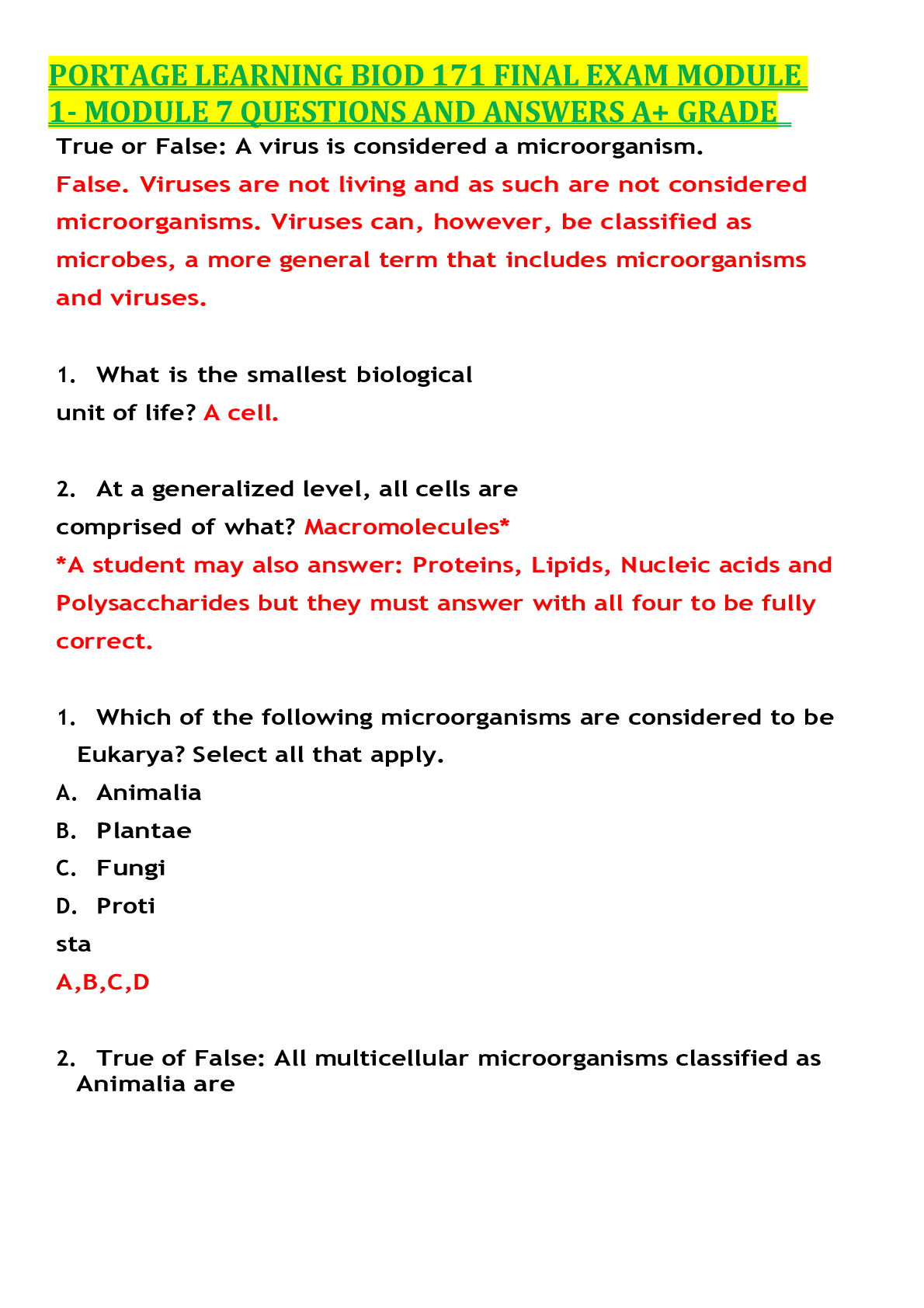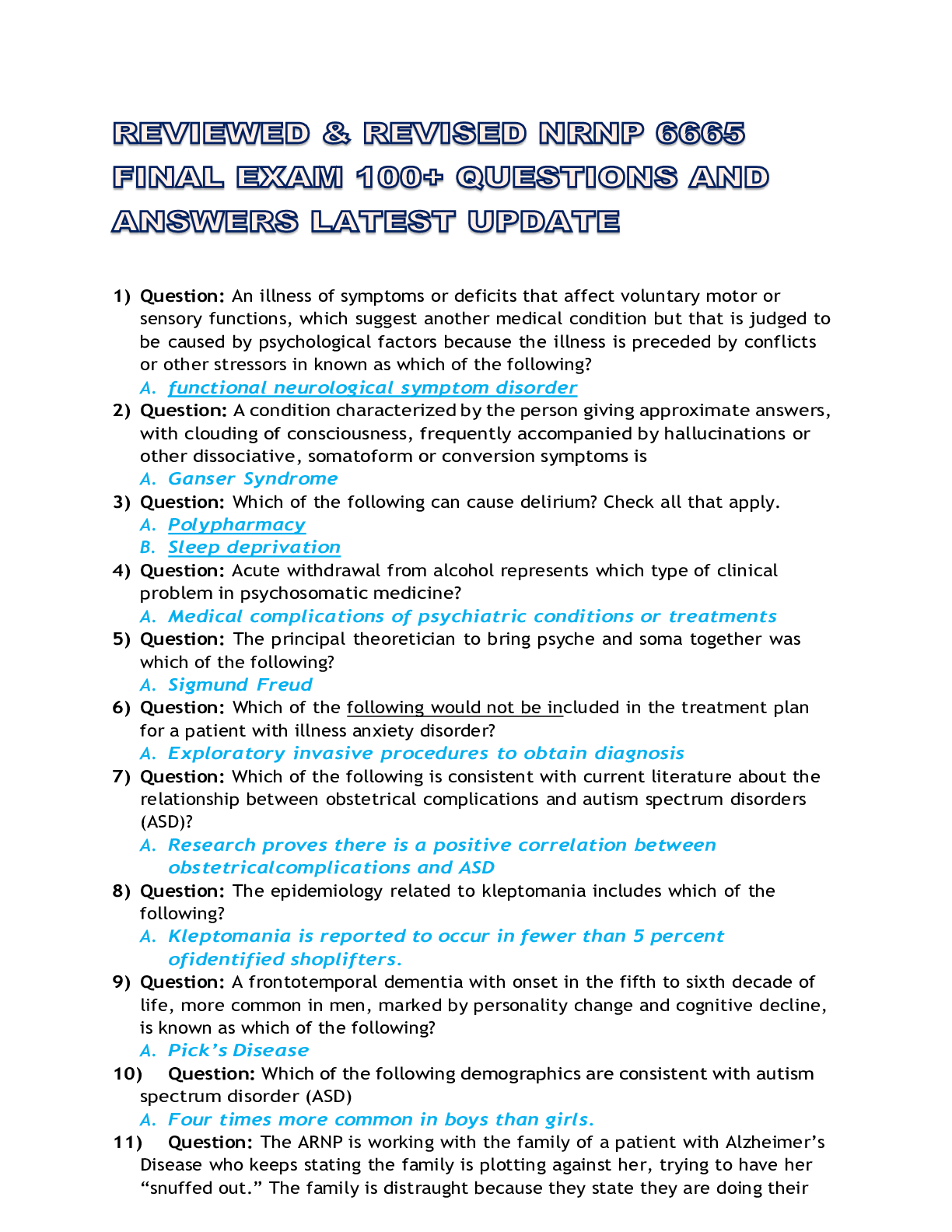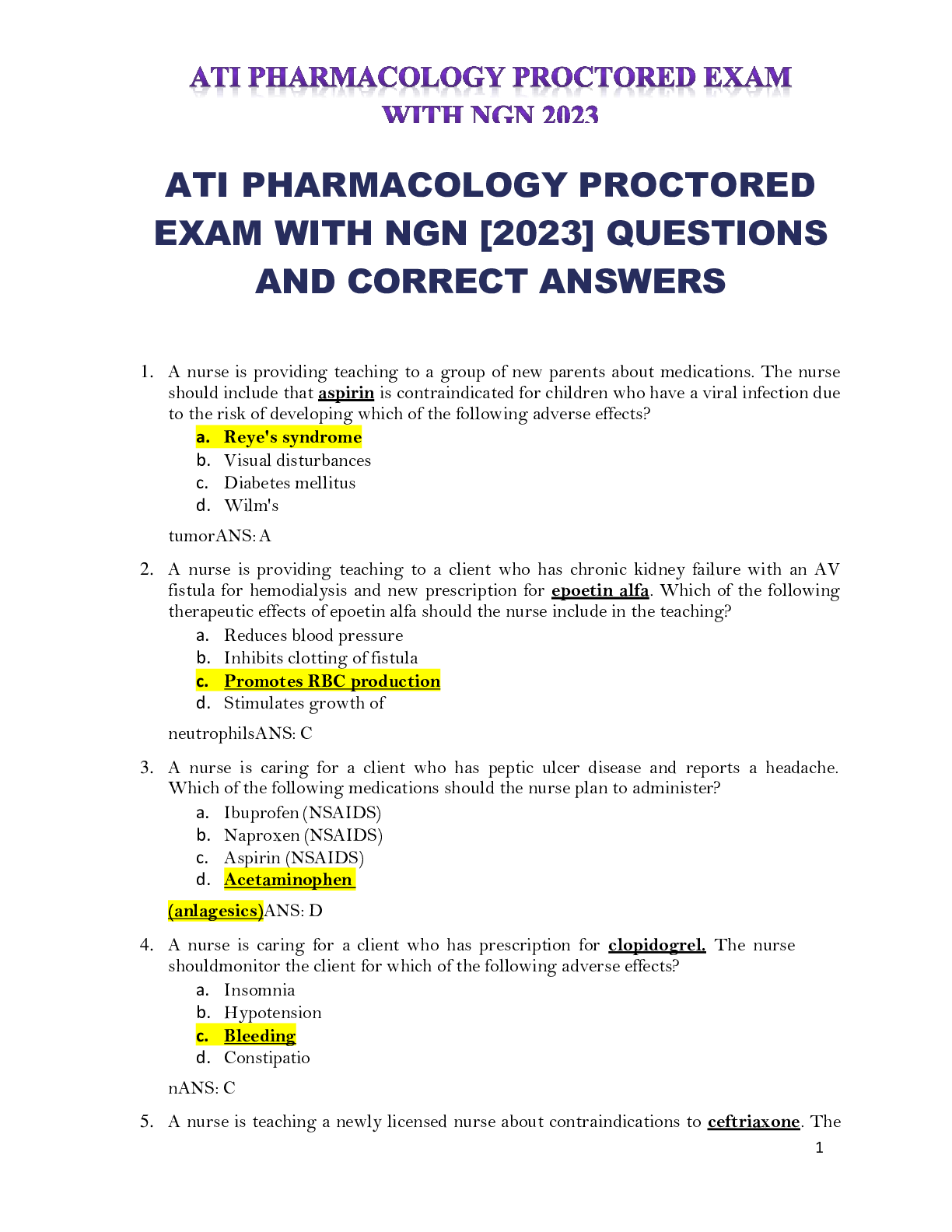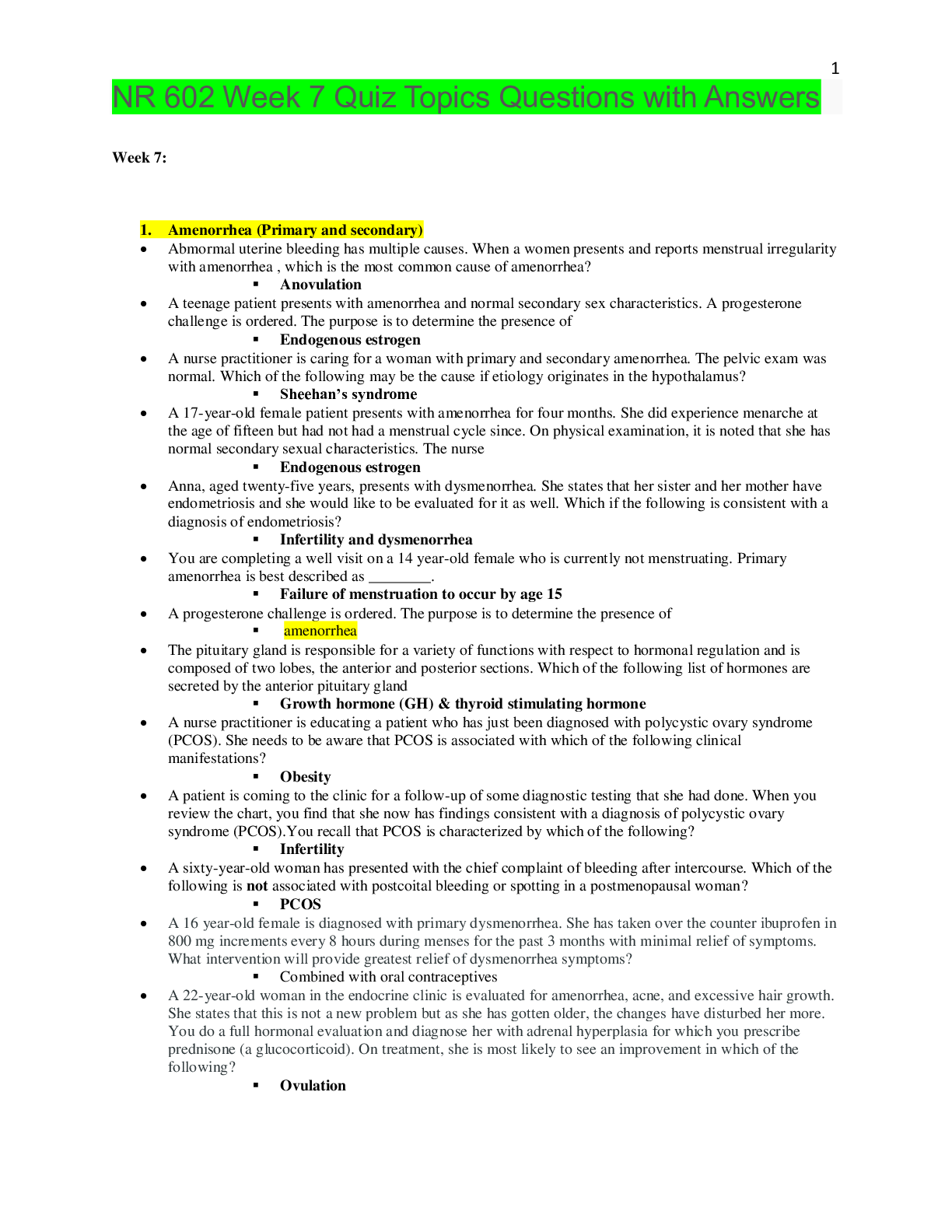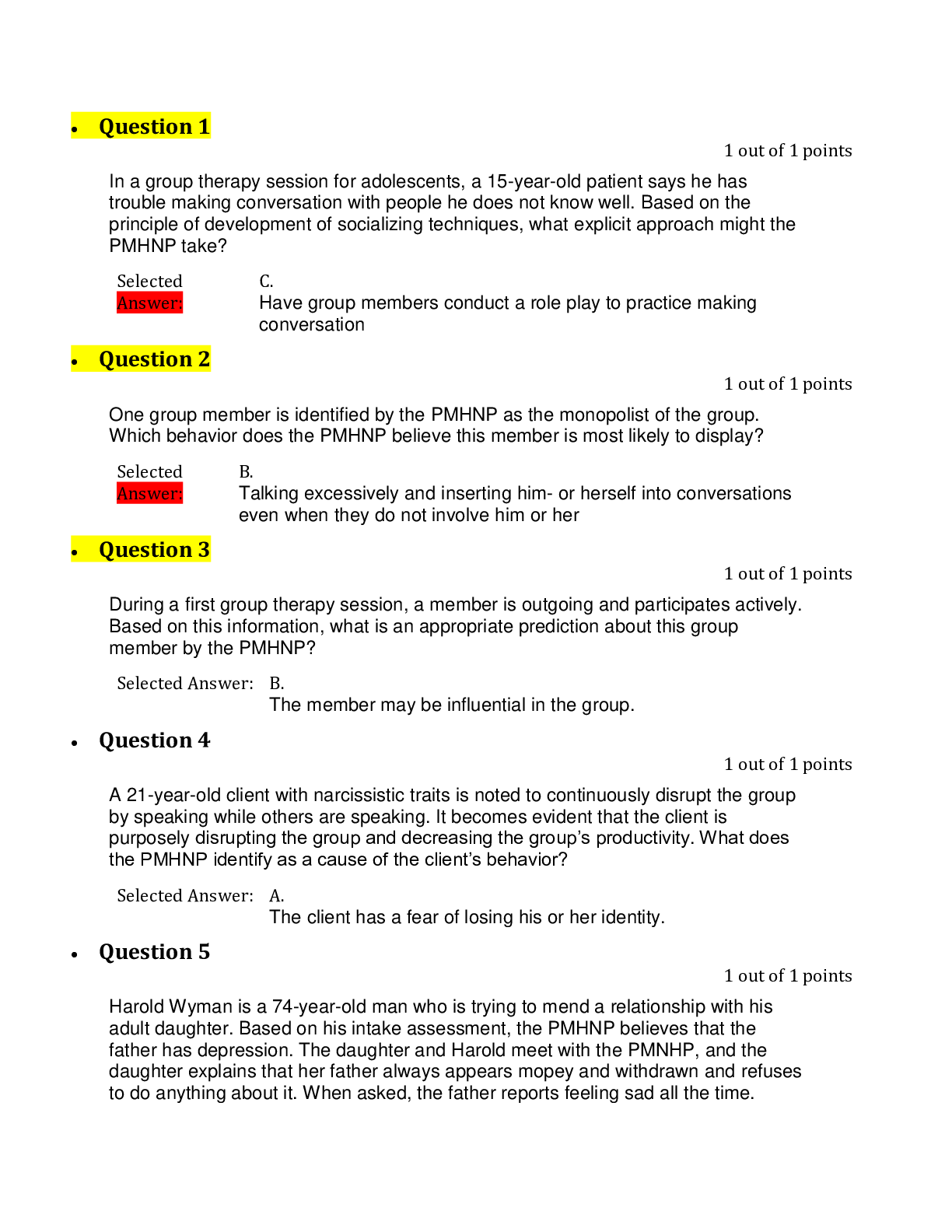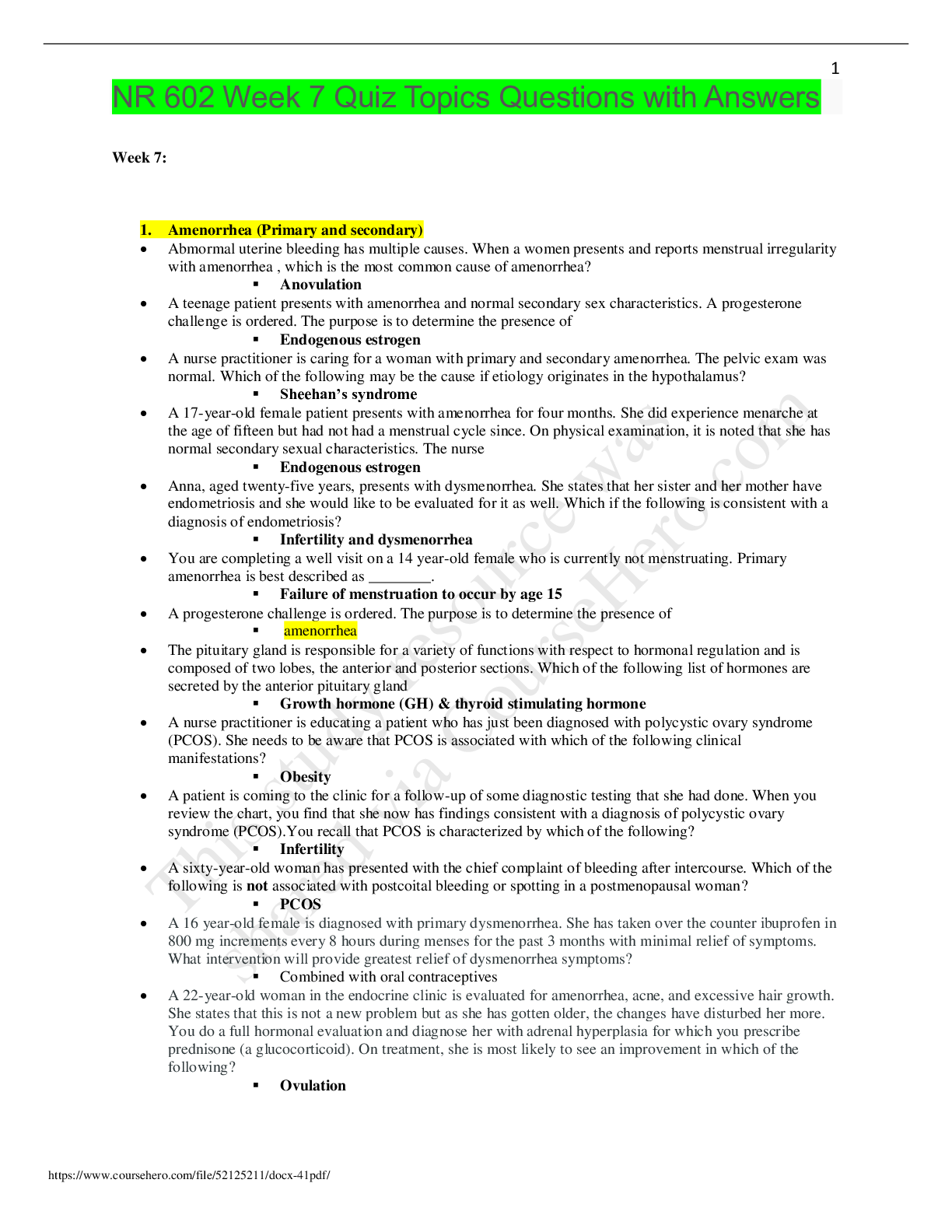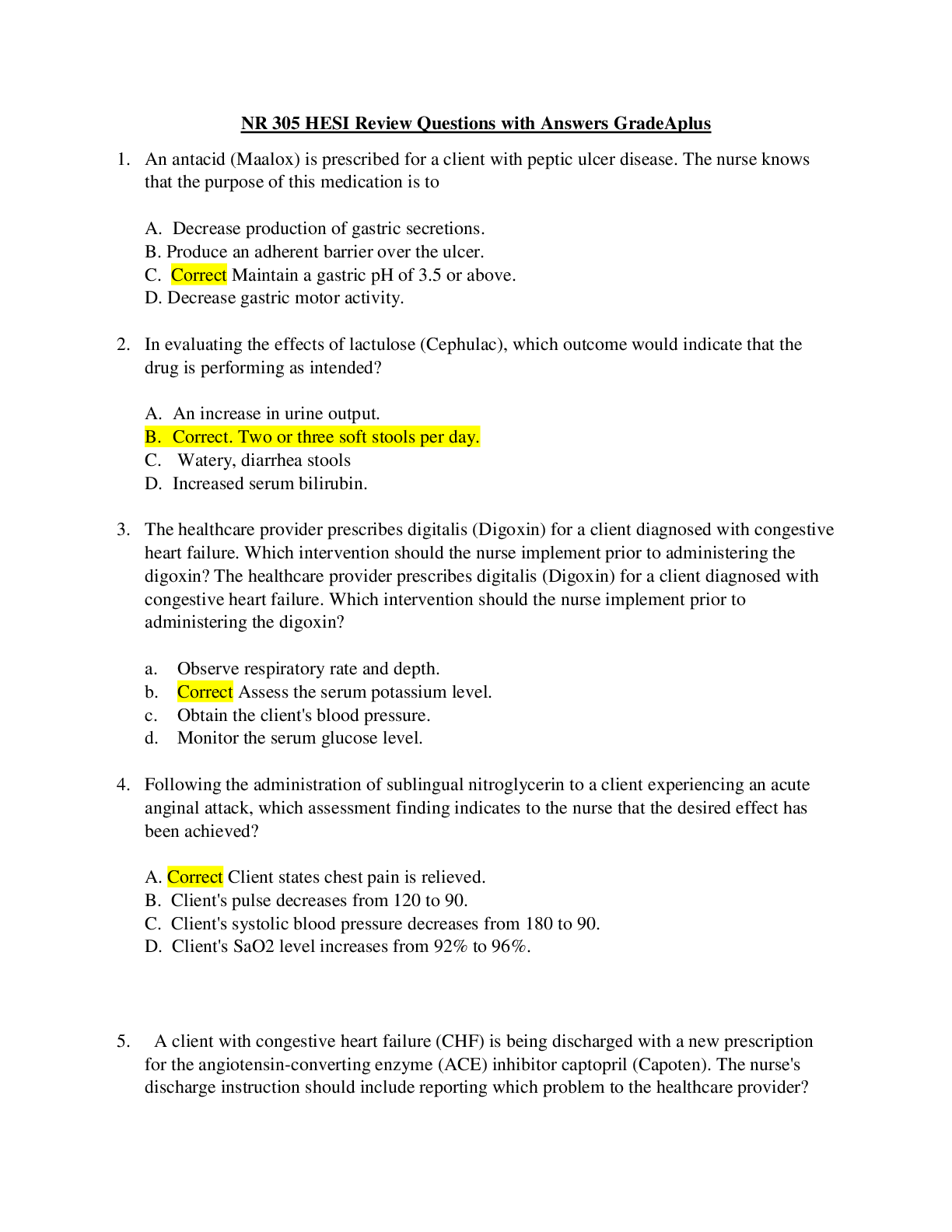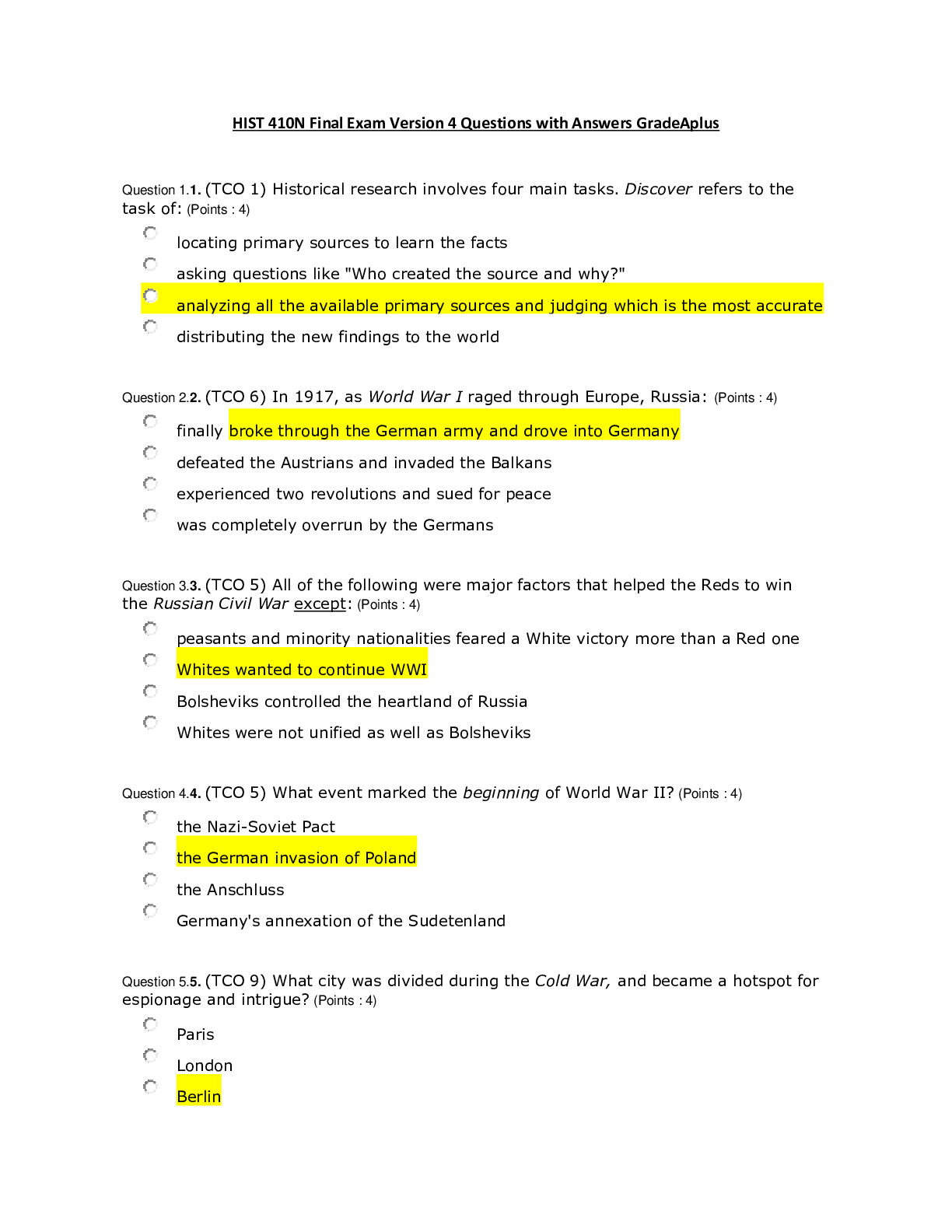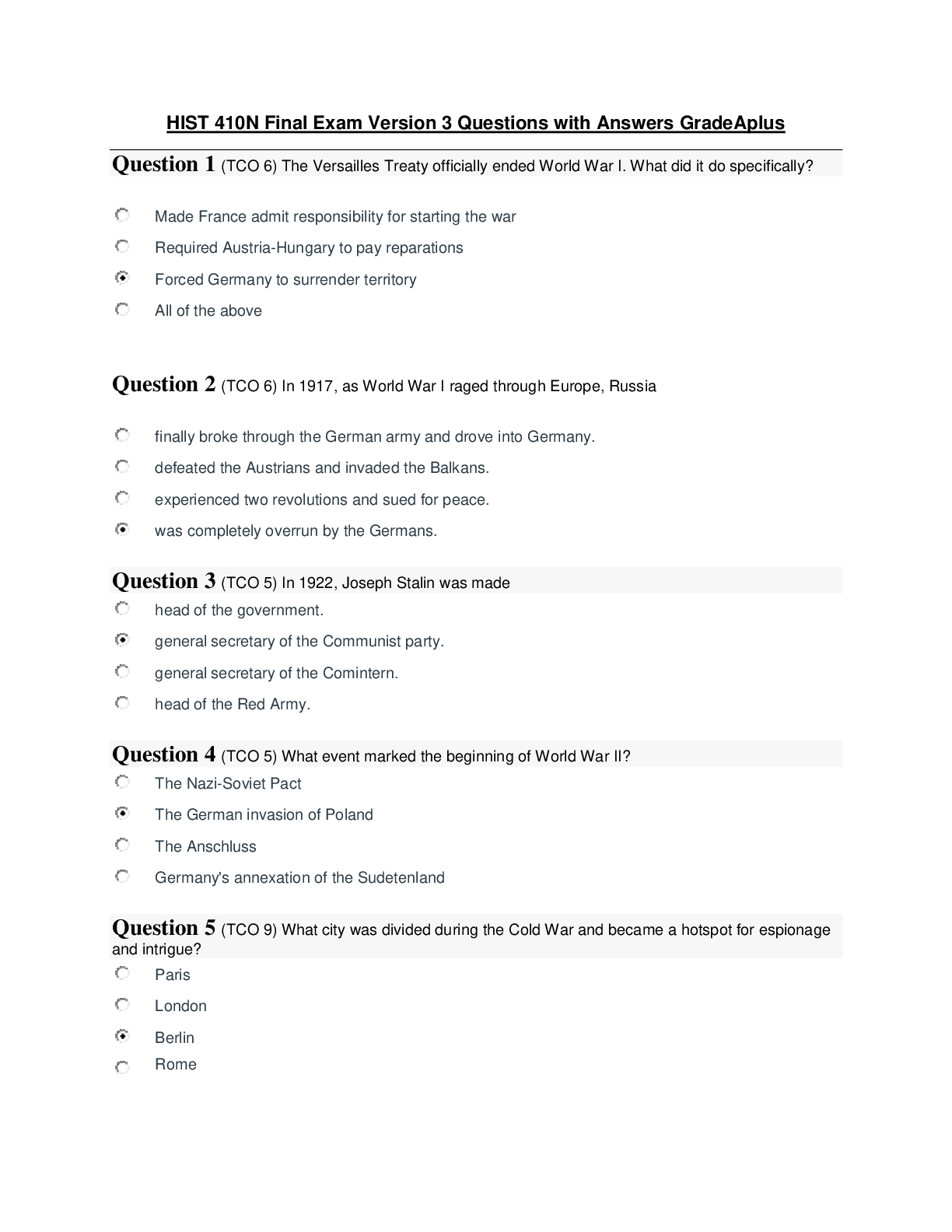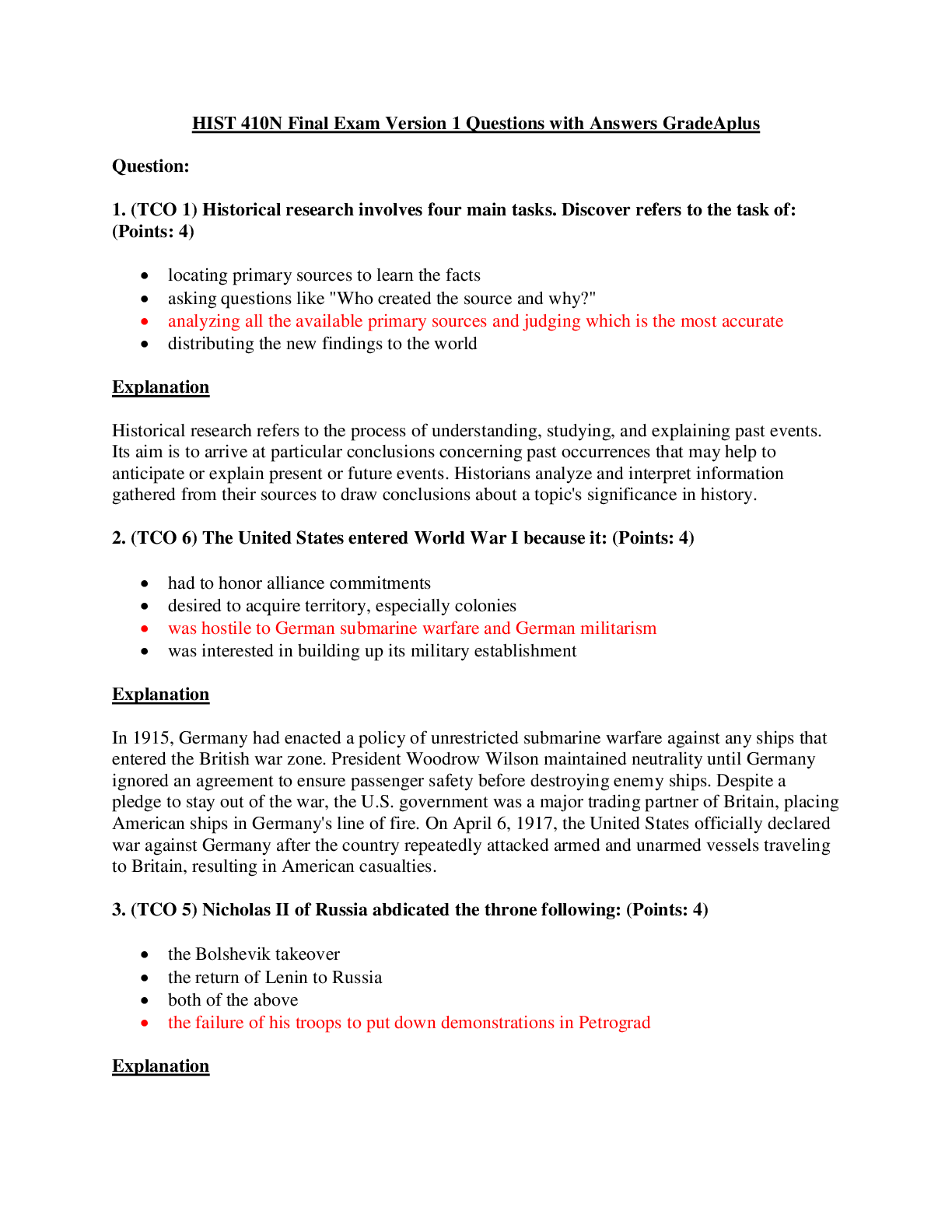Health Care > EXAM > ATI RN MED-SURG PREDICTOR-PROCTORED EXAM QUESTIONS WITH ANSWERS AND RATIONALES (All)
ATI RN MED-SURG PREDICTOR-PROCTORED EXAM QUESTIONS WITH ANSWERS AND RATIONALES
Document Content and Description Below
ATI RN MED-SURG PREDICTOR-PROCTORED EXAM QUESTIONS WITH ANSWERS AND RATIONALES 1.A nurse is assessing a client who is 12hr postoperative following a colon resection. Which of the following findings... should the nurse report to the surgeon? 1. Heart rate 90/min 2. Absent bowel sounds → normal findings after major bowel surgery; takes several days to return to normal. 3. Hgb 8.2 g/dl 4. Gastric pH of 3.0 Rationale: Normal Hgb is 13-18M g/dl, 12-16 g/dl. This may indicate a possible hemorrhaging. 2. A nurse is caring for a client who has diabetes insipidus. Which of the following medications should the nurse plan to administer? a. Desmopressin b. Regular insulin c. Furosemide d. Lithium carbonate Rationale: Diabetes Insipidus has decreased ADH. Administer Desmopressin/Vasopressin increase ADH and keeps pt. on urinating 3. A nurse is admitting a client who has arthritic pain and reports taking ibuprofen several times daily for 3 years. Which of the following test should the nurse monitor? a. Fasting blood glucose b. Stool for occult blood c. Urine for white blood cells d. Serum calcium Rationale:ATI Pharm 16. Pg. 485 Ibuprofen (NSAIDs) monitor for GI bleed (bloody, tarry stools, abd pain). 4. A nurse in the emergency department is assessing a client. Which of the following actions should the nurse take first (Click on the “Exhibit” button for additional information about the client. There are three tabs that contain separate categories of data.) a. Obtain a sputum sample for culture b. Prepare the client for a chest x-ray c. Initiate airborne precautions d. Administer ondansertron. Rationale: No idea what the Exhibit is all about; wont be able to answer it. 5. A nurse is contacting the provider for a client who has cancer and is experiencing breakthrough pain. Which of the following prescriptions should the nurse anticipate? a. Transmucosal fentanyl b. Intramuscular meperidine c. Oral acetaminophen d. Intravenous dexamethasone Rationale:ATI pg. 27 6. A nurse is admitting a client who reports chest pain and has been placed on a telemetry monitor. Which of the following should the nurse analyze to determine whether the client is experiencing a myocardial infarction? a. PR interval b. QRS duration c. T wave d. ST segment Rationale: ST elevation indicates MI. ST depression indicates ischemia 7. A nurse is teaching a client who has ovarian cancer about skin care following radiation treatment. Which of the following instructions should the nurse include? a. Pat the skin on the radiation site to dry it b. Apply OTC moisturizer to the radiation site c. Cover the radiation site loosely with a gauze wrap before dressing d. Use a soft washcloth to clean the area around the radiation site Rationale: pg. 584. Dry the area thoroughly using patting motions. 8. A nurse is caring for a client who is receiving a blood transfusion. The nurse observes that the client has bounding peripheral pulses, hypertension, and distended jugular veins. The nurse should anticipate administering which of the following prescribed medications? a. Diphenhydramine b. Acetaminophen c. Pantoprazole d. Furosemide Rationale: S/S may indicate fluid retention or heart failure. It is important to administer diuretics to prevent cardiovascular/respiratory distress. 9. A nurse is assessing a client who is receiving magnesium sulfate IV for the treatment of hypomagnesemia. Which of the following findings indicates effectiveness of the medication? a. Lungs clear b. Apical pulse 82/min c. Hyperactive bowel sounds d. Blood pressure 90/50 mm Hg Rationale: ATI p. 494: s/s of hypomagnesemia consist of hypoactive bowel sounds, constipation, paralytic ileus. So effectiveness would indicate opposite of this 10. A nurse is reviewing a client’s ABG results pH 7.42, PaC02 30 mm Hg, and HCO3 21 mEq/L. The nurse should recognize these findings as indication of which of the following conditions? a. Metabolic acidosis b. Metabolic alkalosis c. Compensated respiratory alkalosis d. Uncompensated respiratory acidosis Rationale: because the HCO3 21 trying to compensate for respiratory alkalosis 11. A nurse is caring for a client who has a deep partial thickness burns over 15% of her body which of the following labs should the nurse expect during the first 24 hours A. Decreased BUN ELEVATED DT fluid loss B. Hypoglycemia (High due to stress) [Show More]
Last updated: 4 months ago
Preview 1 out of 28 pages

Buy this document to get the full access instantly
Instant Download Access after purchase
Add to cartInstant download
We Accept:

Reviews( 0 )
$17.00
Document information
Connected school, study & course
About the document
Uploaded On
Feb 23, 2024
Number of pages
28
Written in
Additional information
This document has been written for:
Uploaded
Feb 23, 2024
Downloads
0
Views
16

